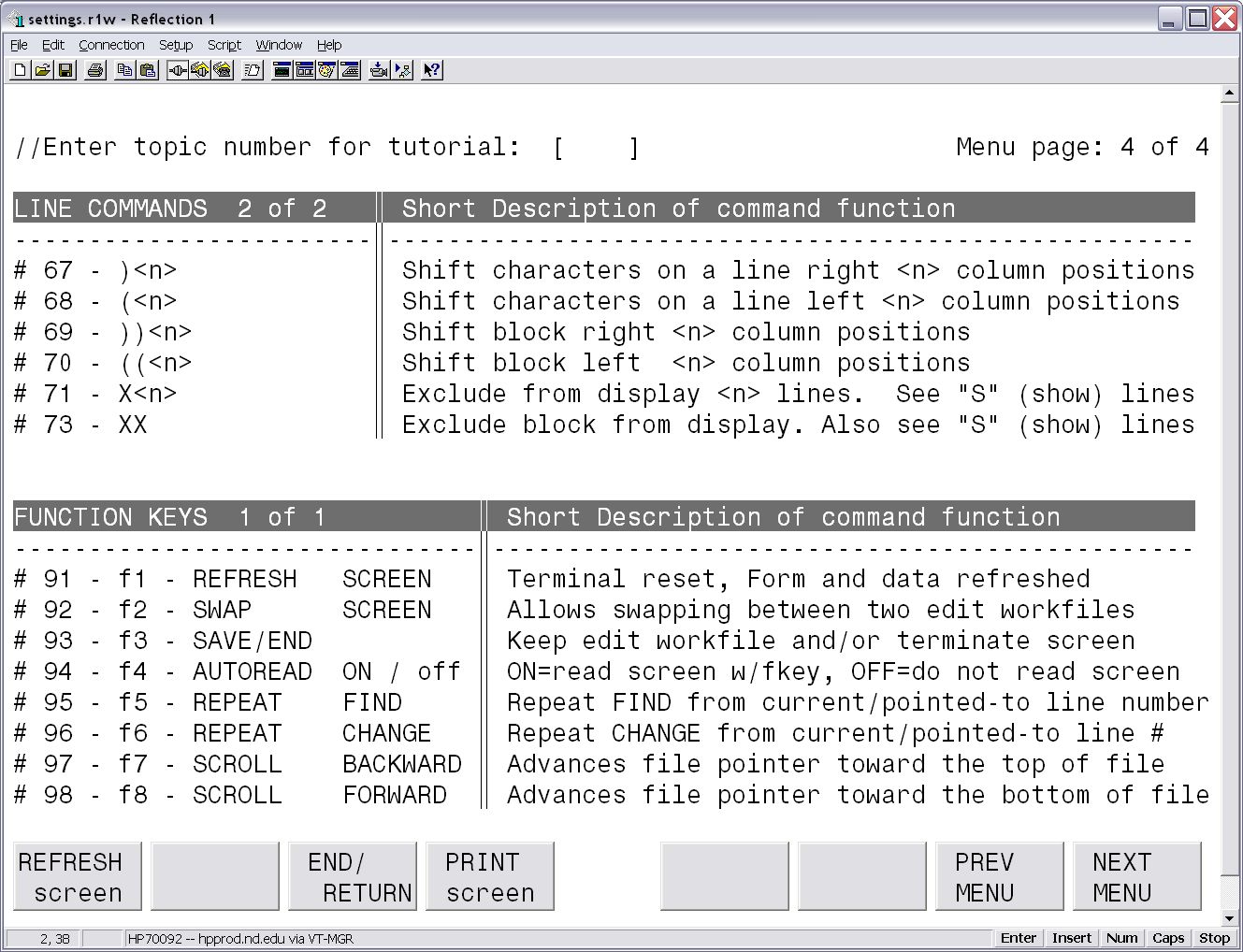EFS full screen editor for HP3000
Written for the University of Notre Dame
Administrative Computing Department
by Eric Schubert
This is the main menu of the Editor. The unique thing about EFS is its ability to accept and execute 3 levels of commands simultaneously: File, Global and Line.
Other menu tiers are selected by function keys:
f5-Help,
f6-IMAGE/SQL,
f8-File Manager

The EFS file manager menu allows you to Edit, Copy, zip, unzip, remove, rename and assign security attributes to any listed files.
EFS can edit any file type including:
COBOL, ASCII, BINARY, INDEXED, SELF-DESCRIBING and DATABASE.
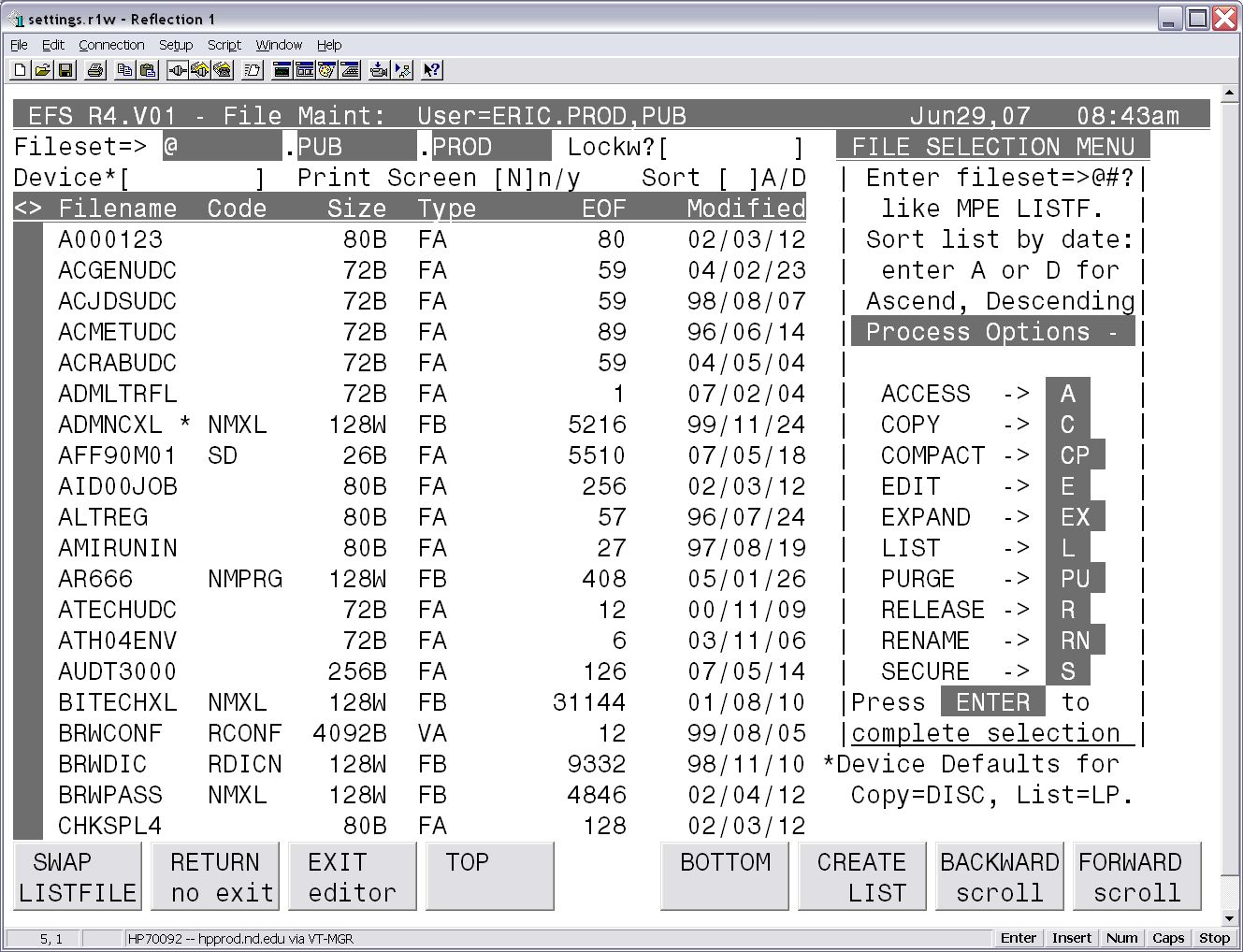
The EFS file editor could edit just about any file whether it was ASCII or BINARY.
This example shows EFS editing a binary file used for indexing hundreds of thousands of names stored in a database.
EFS could edit files as large as a half-million records (512K) with row length sizes up to 2046 bytes.
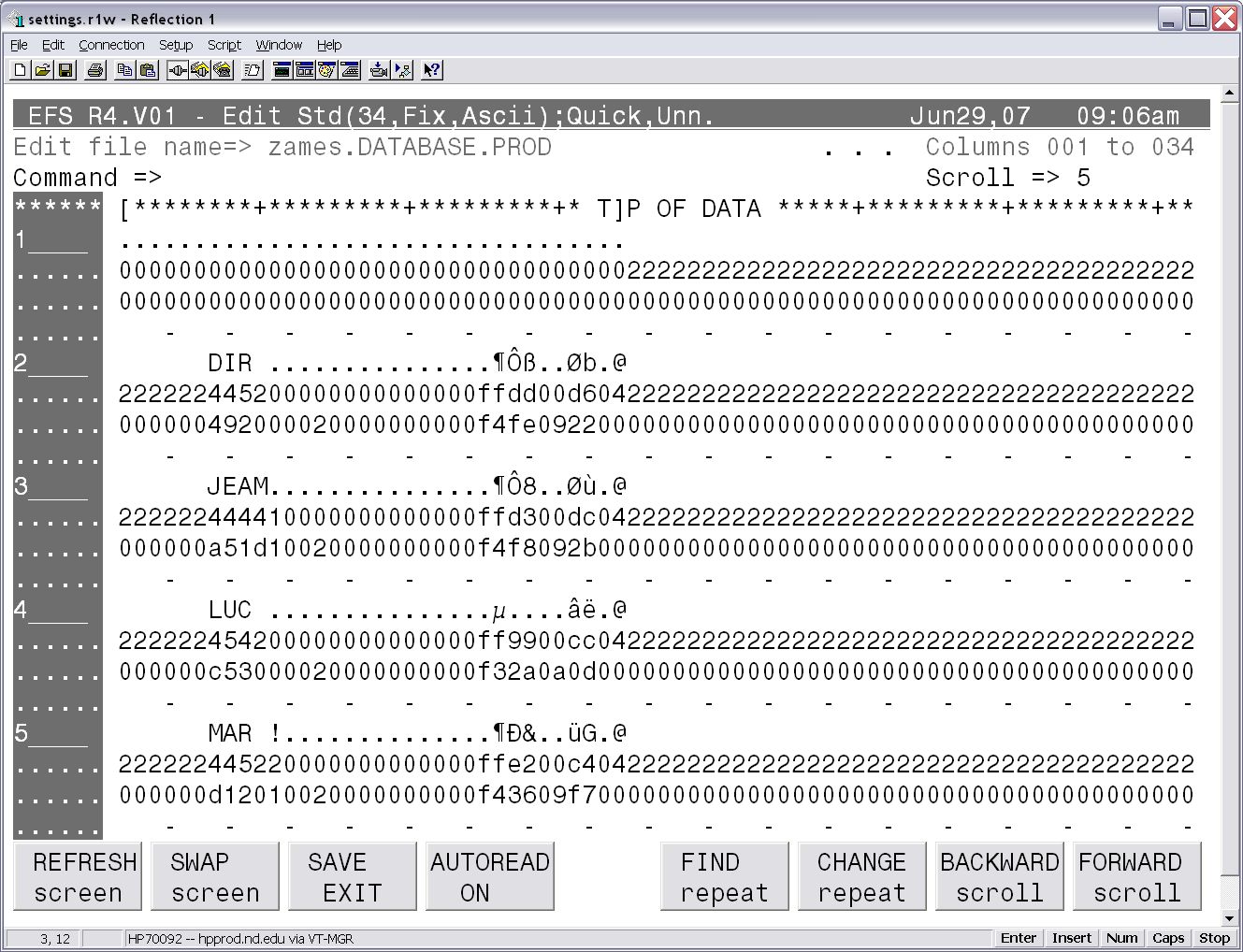
The EFS Database menu allows you to Edit Database TABLES.
EFS supported IMAGE/3000 Omnidex indexing scheme and can edit MASTER, DETAIL and even AUTO-MASTER table types.
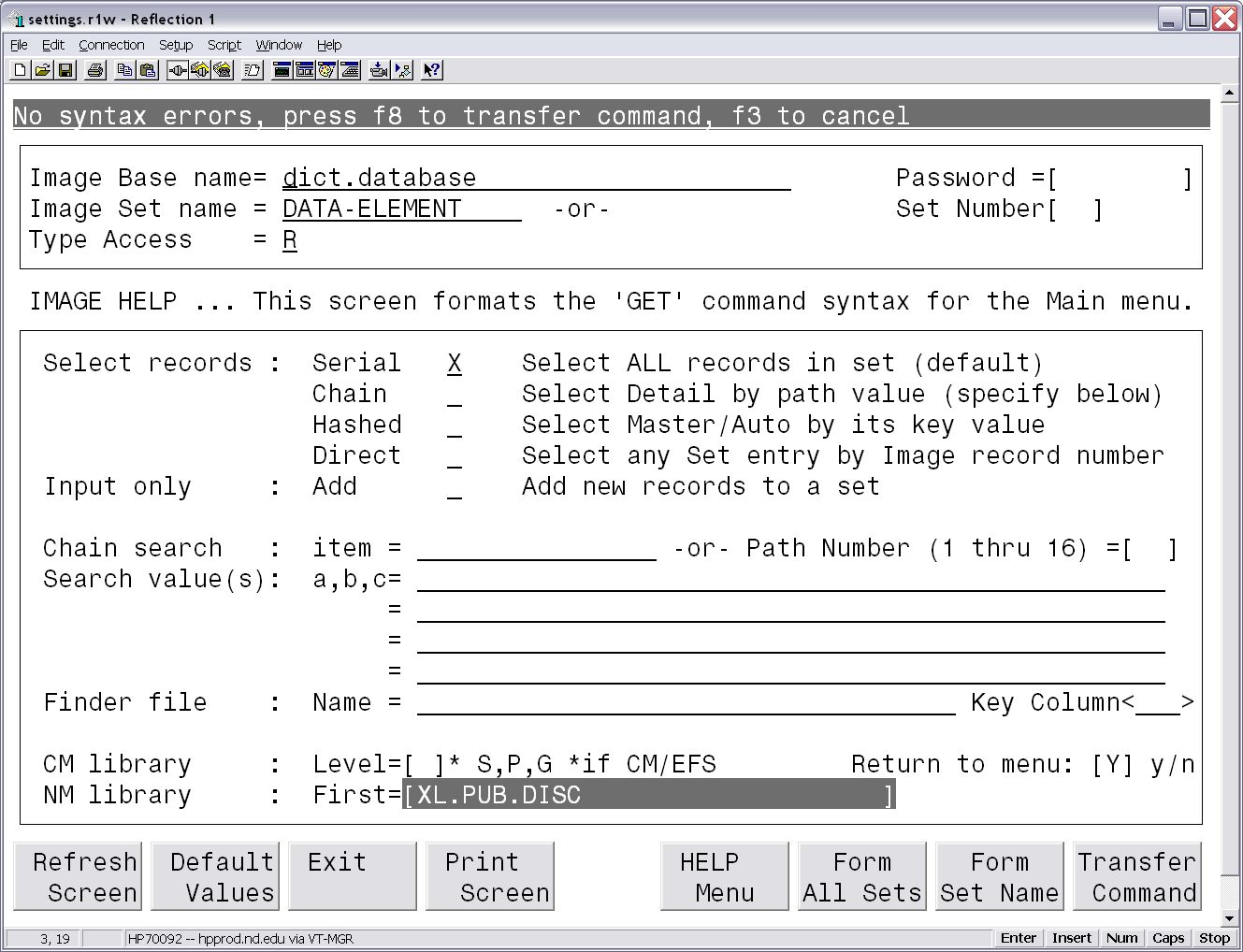
This example shows EFS open a dictionary/3000 MASTER Database TABLE.
EFS can display BINARY data in both field and HEX values allowing EFS to perhaps alter a single byte of a data contained within binary field or replace data by whole field values, for examples.
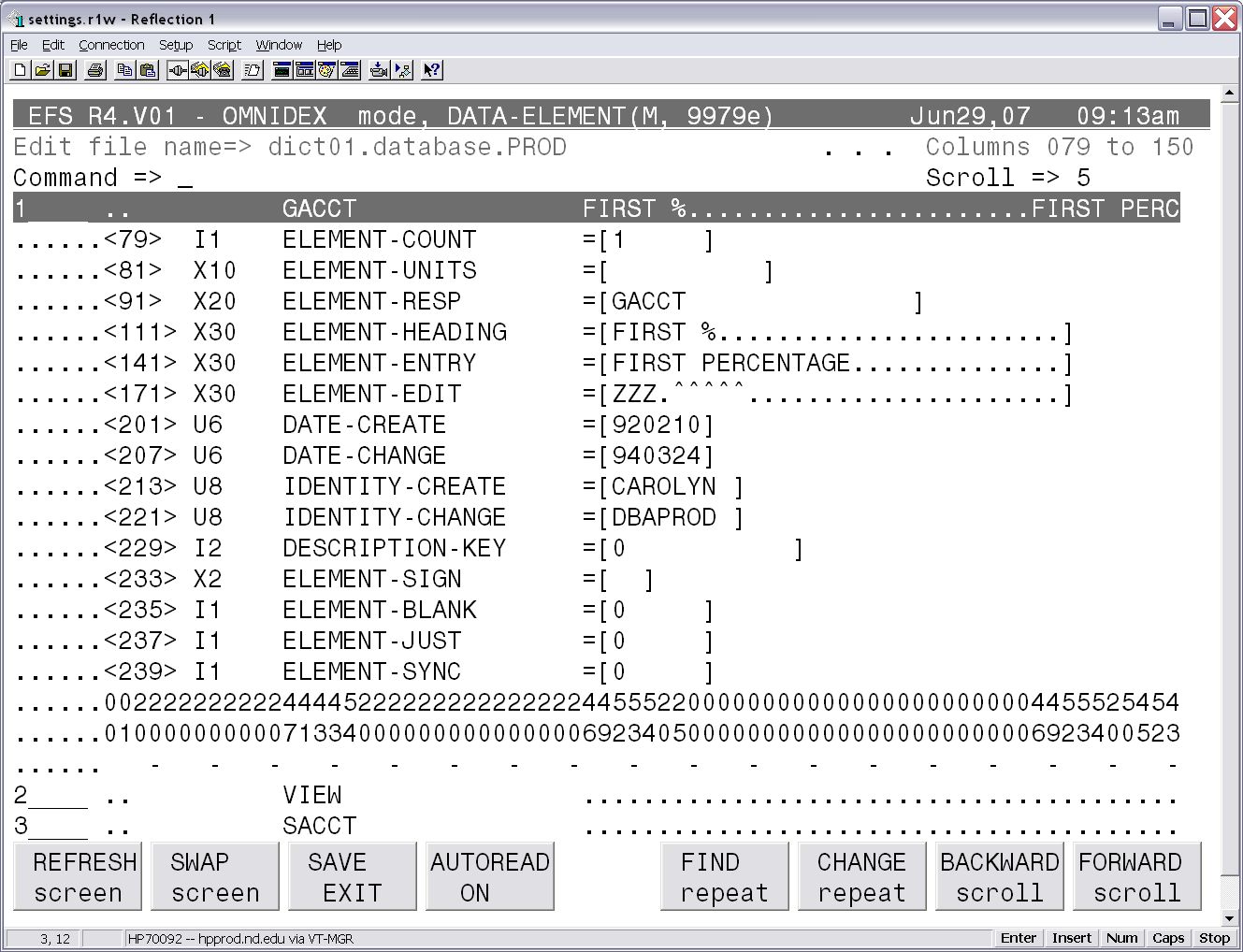
EFS displays related data such as counts of any related DETAIL rows.
Also displayed is the physical IMAGE record number which could be used to directly replace detail rows, if needed.
Another feature is master key value replacement; simply change the master key and all detail rows are updated.
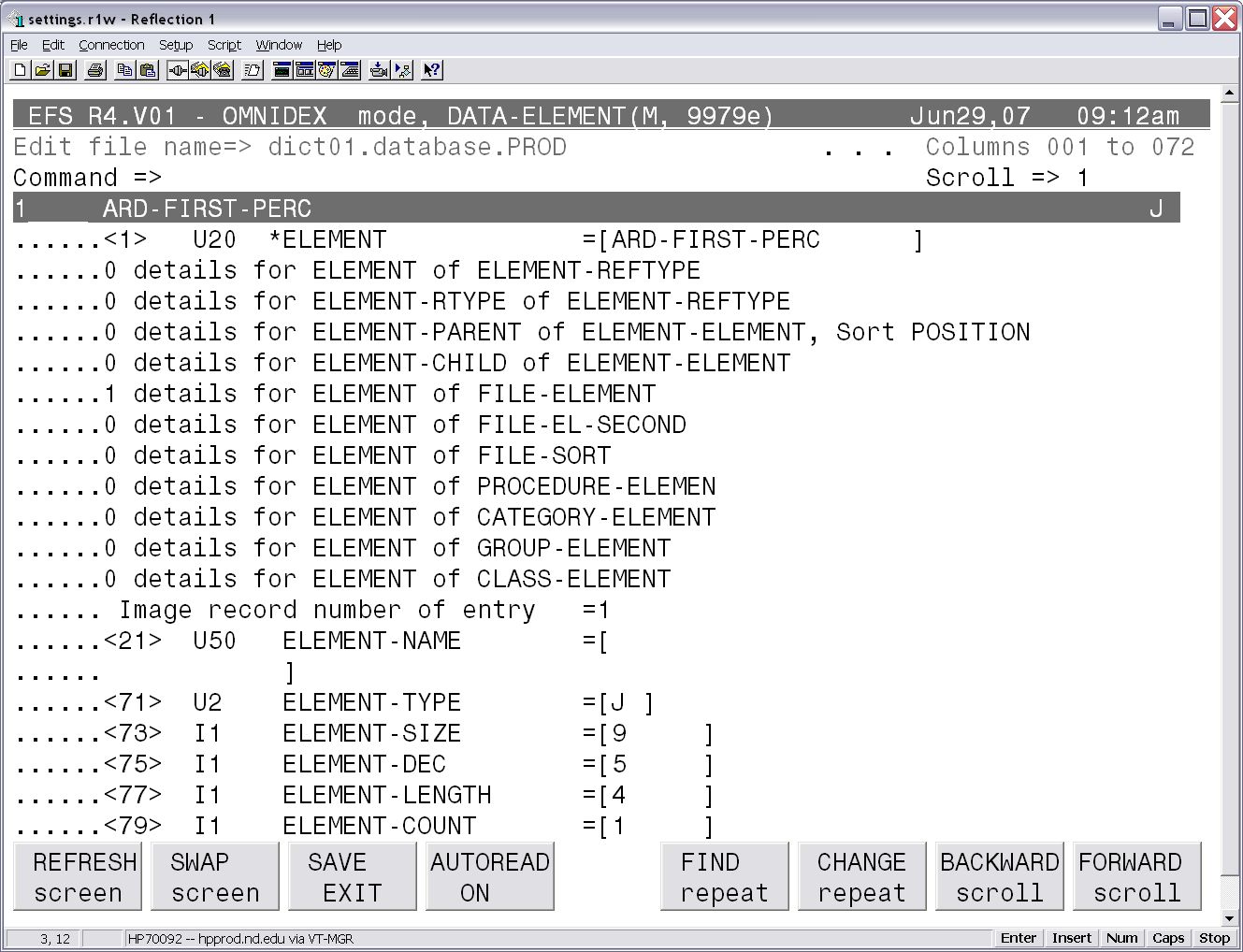
A self-describing file contains a meta data file label which is used to overlay field information on raw file data.
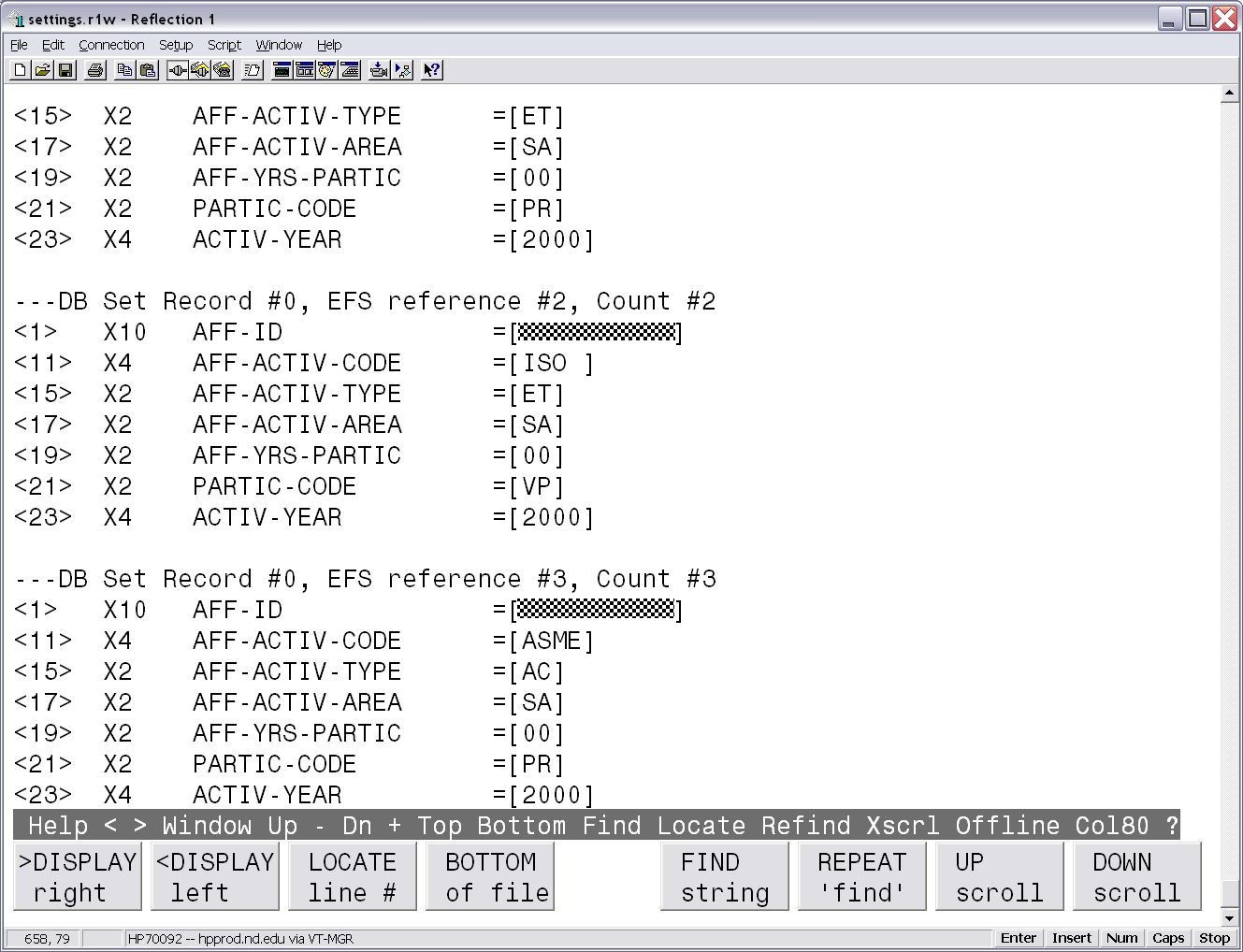
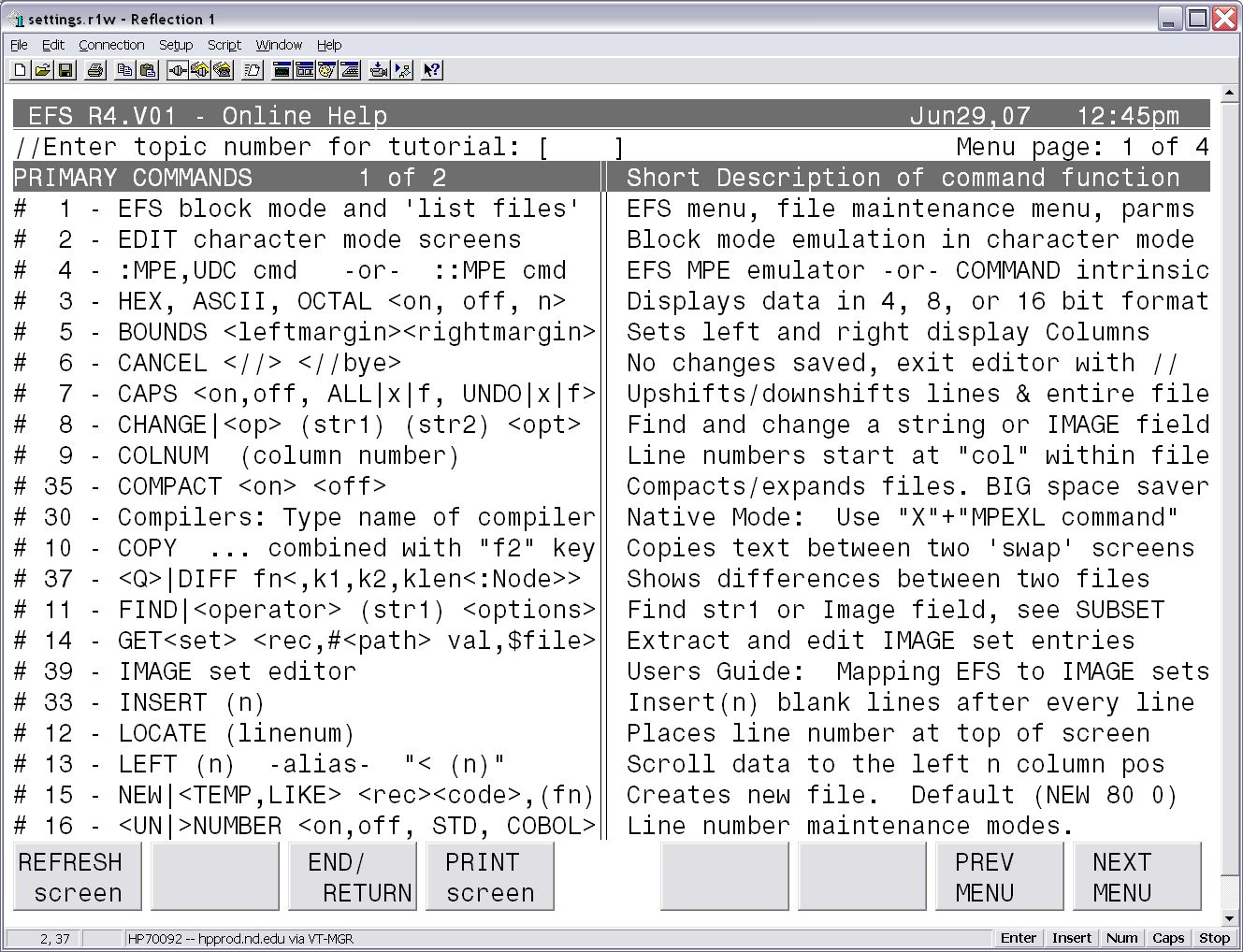
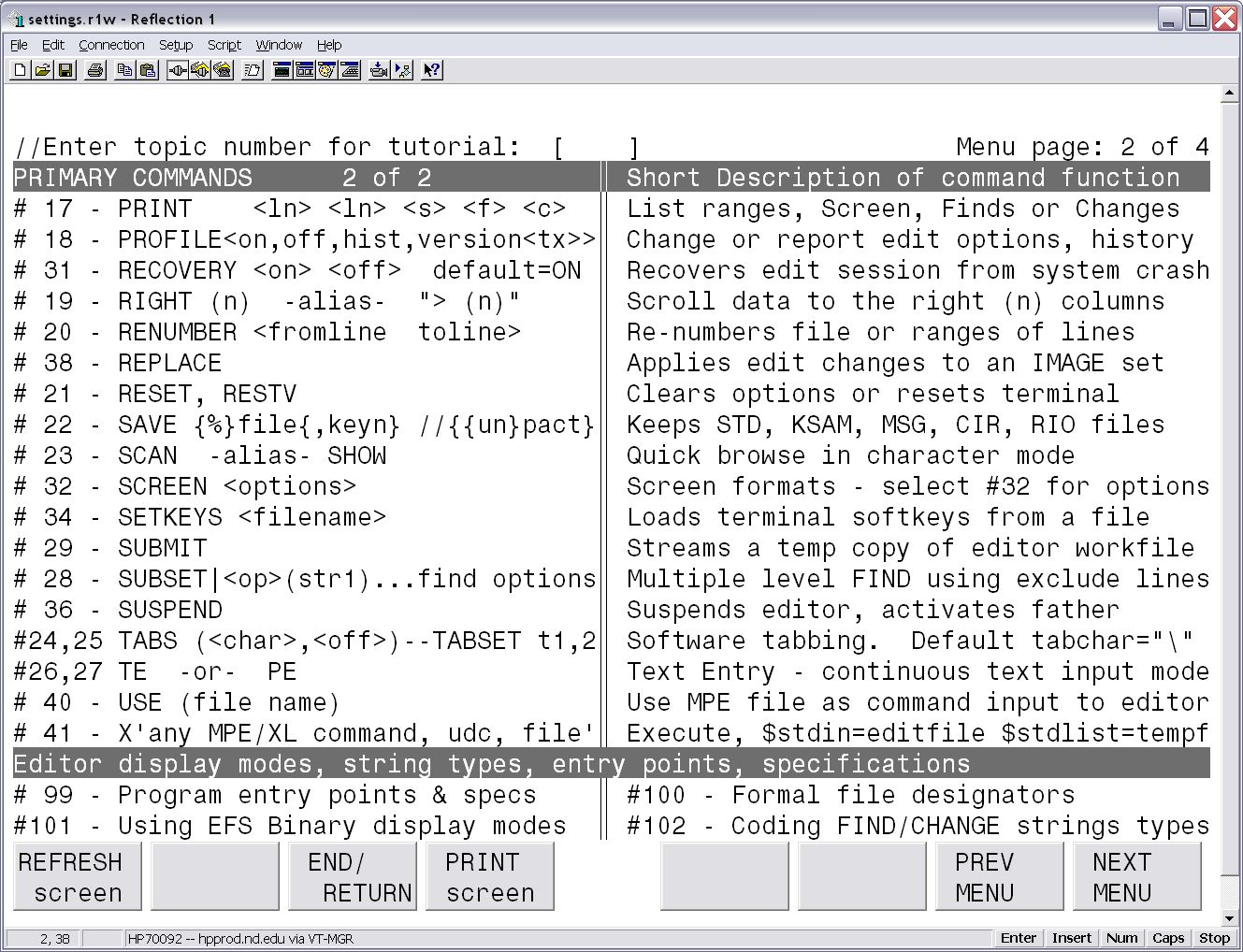
One could repeat lines, delete lines, move lines, overlay lines, format text into paragraphs all the while globally changing some value to another value. This "blocking" feature made EFS efficient when editing code and text.
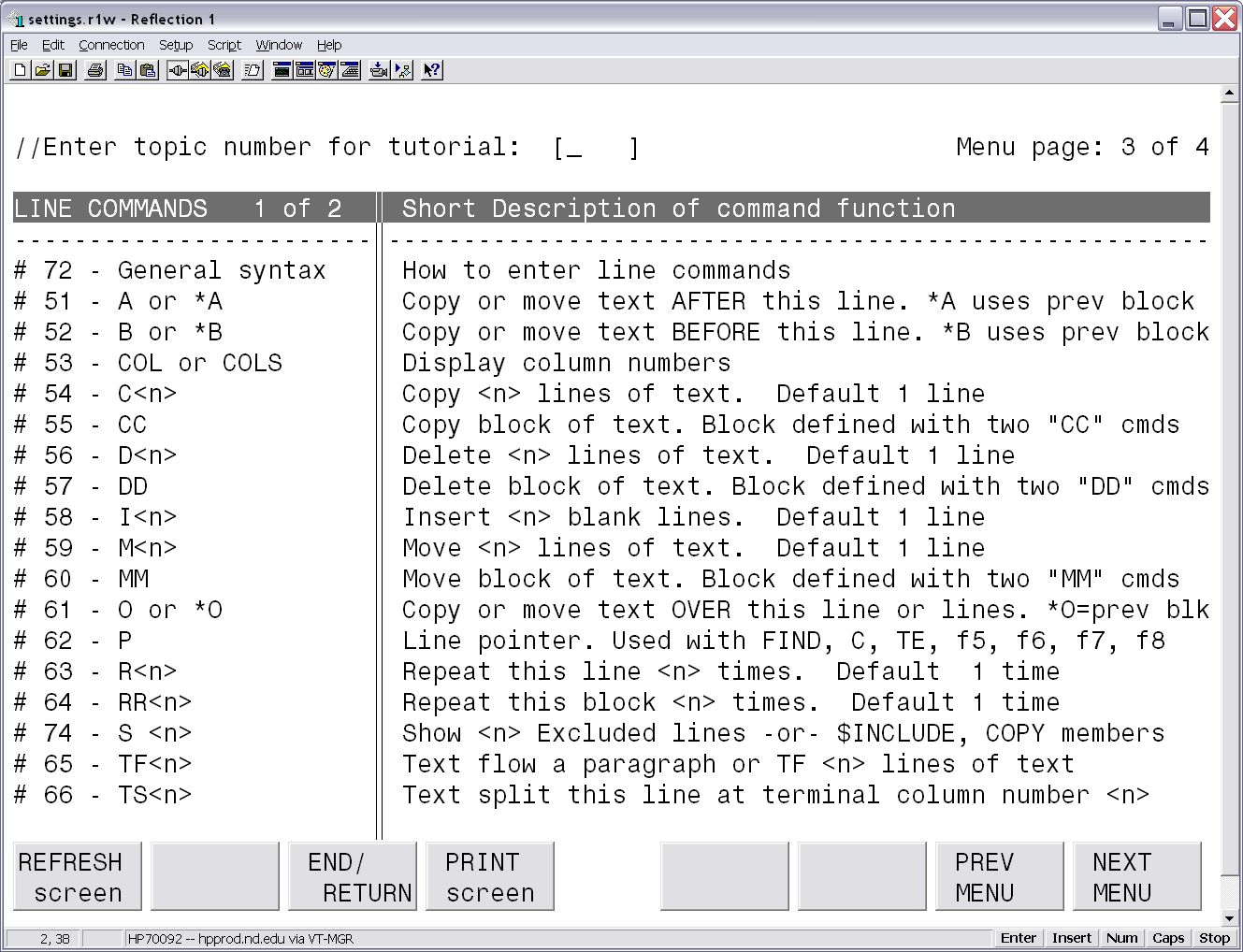
EFS function key commands could be entered simultaneously with line commands and primary commands allowing a total of 3 stacked command levels for each edit action.
